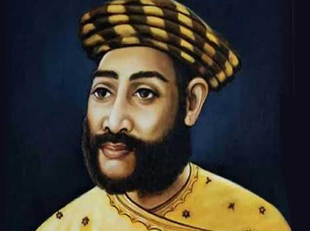The hanging of Mangal Pandey caused great unrest in the army camps across India. On 24 April, 85 sepoys (sipahis) of the 3rd Bengal Light Cavalry, stationed at Meerut, refused to use the cartridges. On 9 May, they were publicly humiliated, dismissed from service and jailed. this sparkled off a mutiny among the sepoys at Meerut. On 10 May, these soldiers raised banner of revolt. They killed the British officers, released the imprisoned sepoys, seized arms and ammunition, and set fire to British properties. This was the beginning of the biggest armed resistance since the establishment of Company Raj.
The sepoys then set off for Delhi. After travelling all night, they reached Delhi next morning. Here the sepoys belonging to the regiments stationed at Delhi joined them.
SPREAD OF THE REBELLION OF 1857
From Meerut and Delhi, the uprising soon spread to other places in Northern and Central India. It was particularly strong in Kanpur, Lucknow, Jhansi, Bareilly, Gwalior, Faizabad and Arrah. There were uprisings in other areas also. At most places, the civilians also joined the sepoys. Where they actually did not participate, they helped the rebels by giving them food and shelter.
Leaders: The revolt at various places was led by different leaders.
- In Delhi, Bhakt Khan led the rebel sepoys.
- In Kanpur, Nana Sahib proclaimed himself the Peshwa. His troops were led by Azimullah and Tatya Tope.
- In Luknow, Begum Hazrat Mahal led the revolt. She was assisted by Maulvi Ahmadullah Shah.
 |
| Maulvi Ahmadullah Shah |
- In Jhansi, Rani Laksmi Bai challenged the British authority.
- In Bareilly, Khan Bhadur Khan led the rebels.
- In Arrah and other places in Bihar and Jharkhand, Kunwar Singh organised and led the revolt.
 |
| Kunwar Singh How many Britishers died in the revolt? |

Comments
Post a Comment